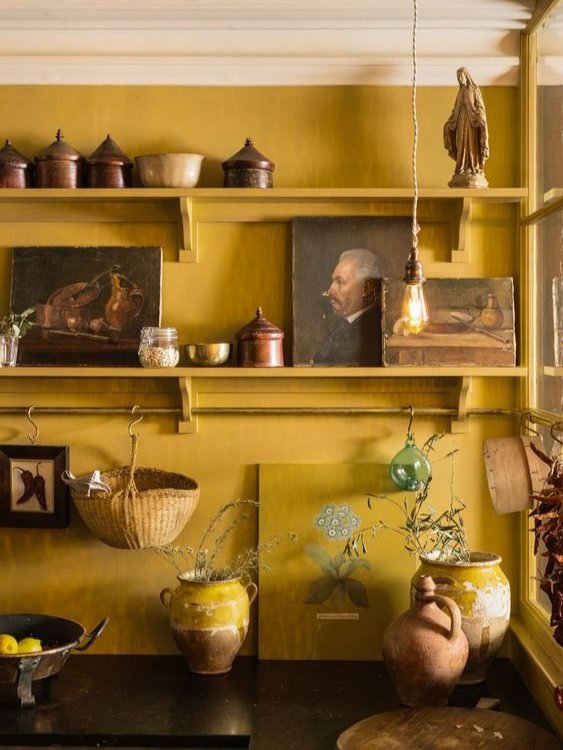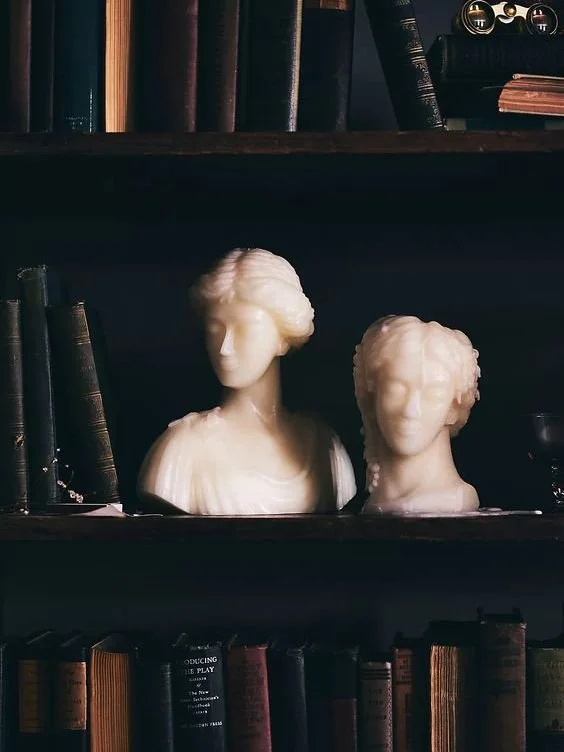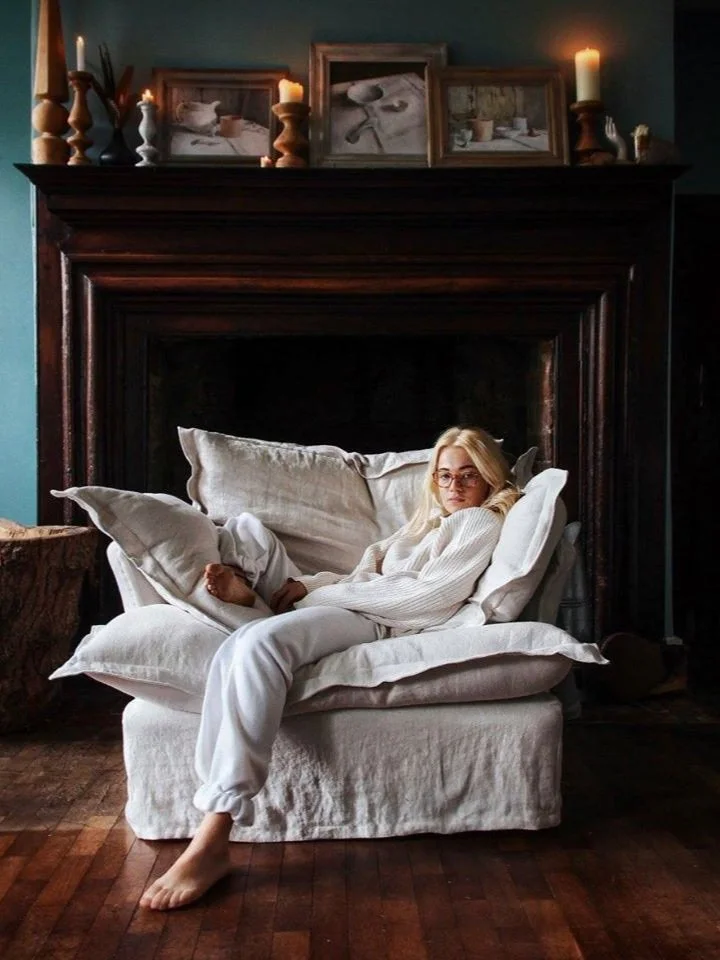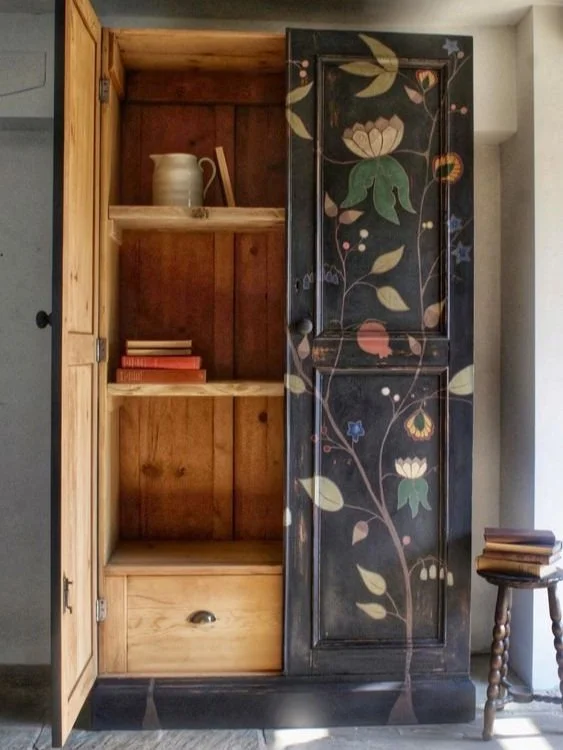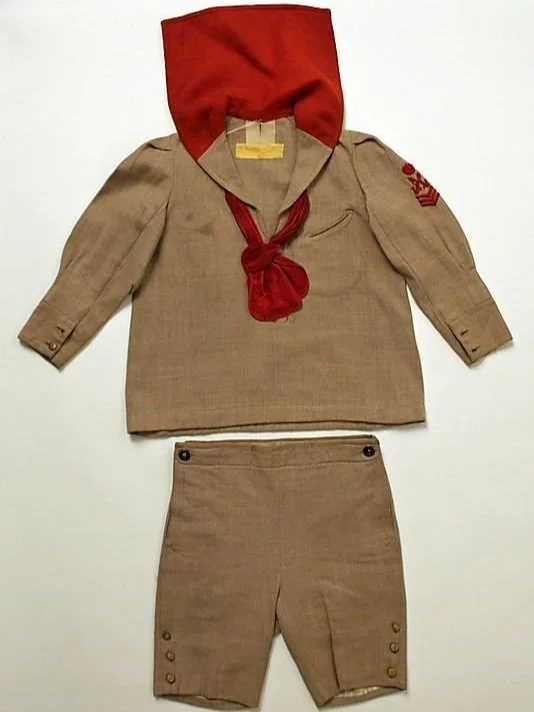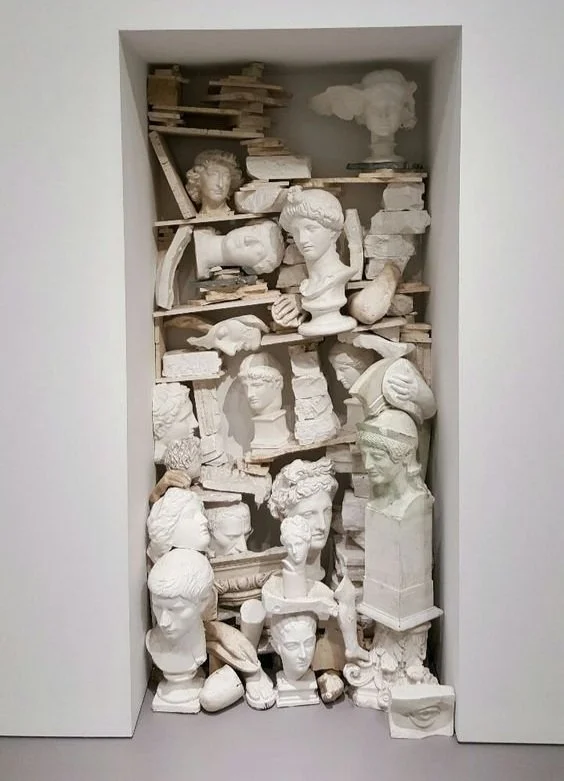LESSON 2
Principles of Storytelling
When I bought Captains Rest, my cabin in the woods, I slept on the floor and discovered how much worse it was than I thought it was going to be. Depressed and full of anxiety, I realised the only thing I could do was start again with the space, so, as always, I began with creating its story. I spent that first week literally writing the world I wanted Captains Rest to become and that’s where it all started, realising we aren’t just creating homes, spaces and objects here – we’re like gods creating our world. Remember, it’s in our dreaming that our magic becomes real.
If we look at the why around this, we’ll find lots of research which proves the power of storytelling and its success when it comes to capturing people’s attention. Through story, you can force yourself into their memories, create close, personal bonds, and make a house that feels like a home. Make a store feel like fantasy, make an object become coveted by so many. Creating your story is the first step everyone misses and it is undeniably the cornerstone of my and, if you like, your process.
I also think it’s important to note that not all stories are big, epic tales full of monsters and men. The most powerful ones are honest and true, these are the ones that make a difference.
A small encouragement …
The exercises in this chapter are so crucial to your success. Please take all the time you can and rewrite, rethink, and re-dream as much as you can. I would love for you to explore the case studies to feel guided if you feel lost and allow yourself to scurry along all the little trails you find in your mind and heart — there are no wrong answers. This chapter should be one of the longer ones, especially if you spend the amount of time I think (and hope) you will discover what is inside you. Put so much love and creativity into this work, it will pay out tenfold, for the more you put in, the greater the rest shall be.
Okay, let’s begin.
Lesson: Why Tell Your Story
There’s an art and a science to creating homes, spaces & objects that people fall in love with and want to experience.
“We are, as a species, addicted to story. Even when the body goes to sleep, the mind stays up all night, telling itself stories.” This quote by Jonathan Gottschall is the key to understanding how to create something iconic that is forever revered. What we create has the ability to invite us into a three-dimensional story, transporting us from one reality to another, from an outside world to a world of story.
I’m a teacher, and what I’ve noticed about the projects of mine, of my students, friends and mentors that have been successful, is that there’s a science to telling stories. If it’s a science, it’s in reach of everybody; whereas, if it’s an art, it is achievable by few.
We discovered in the last chapter that we have lost our way with spaces & creativity – we’re living in an oversaturated world where few define what many should be doing. It’s only the few who are successful and the many who emulate their work; it’s a revolving door of constant dissatisfaction and constant consuming and wanting to be someone, but you can never be someone if you’re trying to be someone else. You have to start with why?
My giant dissatisfaction with the industry made me want to shut the door on it all, but instead, I started teaching what I do to see if my theory of visual storytelling as a science, not an art, was right. Hundreds of success stories later, I can conclude that it was.
As many magazines, books, Instagram accounts and Pinterest boards as there are to show you beautiful places and spaces, this is the class that will make it yours. I want you to understand that even if I taught you what to buy or create (which I don’t plan to do), the only way that can work is if you truly know who you are. Every single space or object in the world can be beautiful if it is allowed to authentically be what it is, and you are who you are. I think if you can create a space around you that is allowed to be what it is, imagine a world where you can be who you are. Imagine a world where people come into a space like Captains Rest and understand with clarity the truth about the world and what is real and our place in it. A place that brings peace and happiness and simplicity, and then imagine going home … If we can teach each other the art of story, the art of authenticity and the art of beauty, instead of where to buy the thing or how to think, that’s forever.
When I see something I’ve never seen before, I fall in love with it and never forget it. The art and science of creating iconic and successful spaces and objects extends past those with a beautiful heart and extends to those who have a business mind. My students from my first school, The Hosting Masterclass, have created iconic spaces in their own right and have been published in places far beyond their wildest dreams for their humble homes. Not surprisingly, many of them are competing with some of the biggest accommodation players in the world because they know that at the heart of an iconic space is the cutting truth of authenticity.
Lesson: The 10 Types of Stories We Tell
The best stories are usually the simplest – there’s always a beginning, middle and end, and it feels complete and whole. Your home, your spaces or your products can tell you all sorts of stories – I’ve narrowed the list down to 10 as a starting point to inspire you, and included an image which demonstrates each in a space and as a product to get you thinking about the possibilities that exist for you.
Story: Tell a tale.
Location: The story of what is around you.
Nature: The world outside our windows.
History: Gazing back.
People: Tell your tale.
Experience: Let me show you my world.
Family: Stories told apart, together.
Lifestyle: How we live.
Space: The thing itself.
Colour: Colour communicates.
As an example, if you’re styling your home and you decide to tell the story of location, you’re really telling the story of where you are and where the house is. Therefore you begin to shape your visual story by finding objects and things that are true to your location and where you are; you make sure these objects and things are unique to this location and that, if pressed, the story of this home simply could not exist anywhere else because it wouldn’t feel right; and you are detailed in the objects you choose and how you tell them because this is what makes a space memorable and rich.
When you read through, you may feel like your space or idea wants to tell more than one and, to be honest, they will tell more than one, but you have to begin by deciding what the main story you will tell is. Beautiful stories are complex and weave a few, the very best weave them all – because after all, great art mimics life – or as sometimes proposed, the other way around.
Now it’s time to explore the 10 stories you can tell with some examples I’ve dreamed up so you can start to understand where your ideas could go. For each example below, I’ve shown a space telling a story, and illustrated how a product might tell a story so that you can see how you might be able to think about each type laterally for your project or concept.
History: What a wonderful story to tell, the way we have treated our spaces through the ages. This art deco bathroom provides endless inspiration in terms of colour, form, textures, patterns, surfaces we can re-imagine in designing new spaces. I also like to look back to create spaces that look forward.
Colour: A few years ago I worked on a linen bedding collaboration which is yet to come into existence. I was so inspired by the colour combination of these turn-of-the-century scout uniforms.
Workbook Time. Reach for your workbook, and complete Exercise 2.1, now. This is your opportunity to start exploring your stories. If you are feeling a little lost, have a look at my case study, so you can see how I’ve done the exercise for myself, which might help you form ideas about how to complete it for yourself.
Take your time. Our sweetest songs tell of our most secret desires.
Lesson: So What Is My Story?
The great thing about stories is that if they are yours, they can be whatever you want them to be. A reflection of life for you right now, or a reflection of life as you’d like. Let’s start with a brainstorming exercise for this chapter; the questions in your workbook can be interpreted however you like.
If you are designing a home, space, a business or a product, answer what questions feel relevant to you. I have attached my answers for this exercise in the case study so you can get a feel for how this exercise might work for you. I encourage you to to use as many words and ideas as you can, or even do it on some fresh paper, repeating it a few times with different ideas you might have. Find the threads you like, generating ideas from there. It’s best to start with the basics – the broad ideas about who, what, where and when, all the story basics. Next, start to colour that story in – add the textures, decide if you feel young or old, masculine or feminine. Are you humble or high end? These details are what bring your story to life so consider every little detail – nothing is too small.
It’s time to start dreaming – and not worry too much about what’s next from there.
Workbook Time. Reach for your workbook, and complete Exercise 2.2, now. You might like to make some extra copies of the table and repeat this exercise 2 or 3 times, so that you can try a few different approaches to your project, and experiment with what your story might be. Please don’t worry about the “style” column for now, just focus on “story” – we shall get to that in chapter 4. You are most welcome to print out the exercise a few more times, so you can try it on as many times as you like!
Remember, we create to taste life twice. In the moment and in retrospect.
Next, tackle Exercise 2.3 & 2.4. Now that you have brainstormed all sorts of ideas, the next step is to distil them into a concise (very concise, and to the point) story. If you’re not clear and don’t understand it, it’s not a story anyone will want to finish.
Brainstorming. Distillation. Writing. Those are the three steps and they are absolutely repeatable for as many stories as you can possibly come up with. I think the best way to learn this one is to see it, so keep referencing back to the case studies. You’ll see how we took a concept and brought it into a real world. These should give you all the permission you need to get yours going.
“We are, as a species, addicted to story. Even when the body goes to sleep, the mind stays up all night, telling itself stories.”
— Jonathan Gottschall
02. Community
Any work, or ideas you are posting related to this class, please use the hashtags #principlesofstyle and #poss02 so your fellow classmates can connect with you and continue to grow this community.











